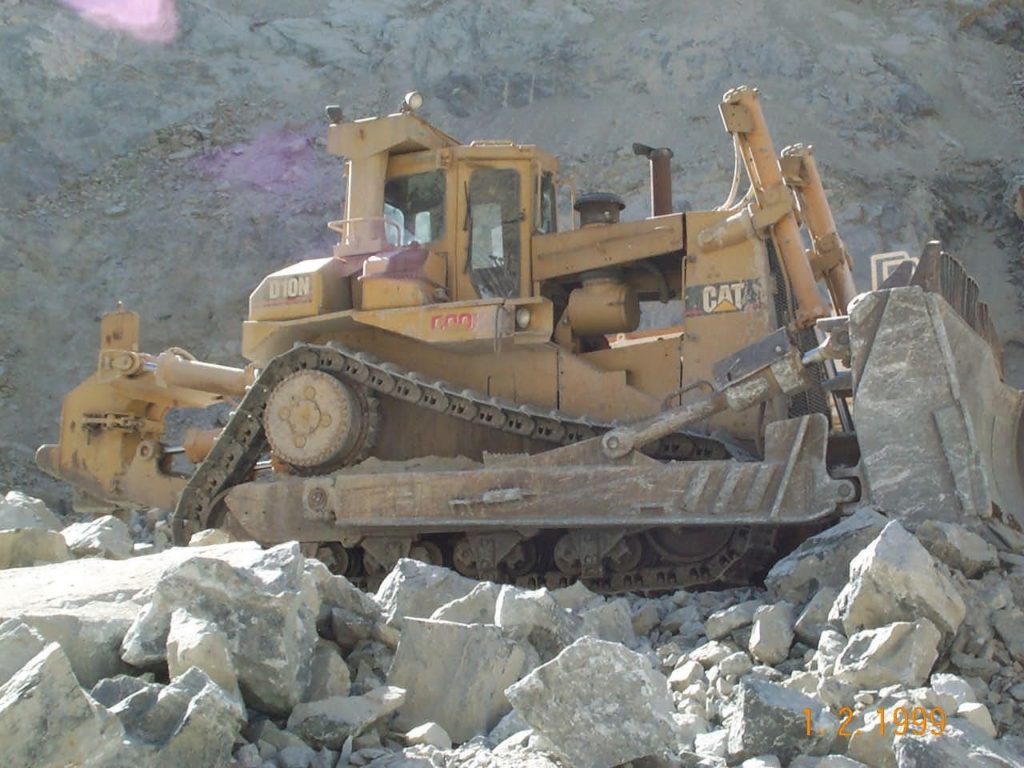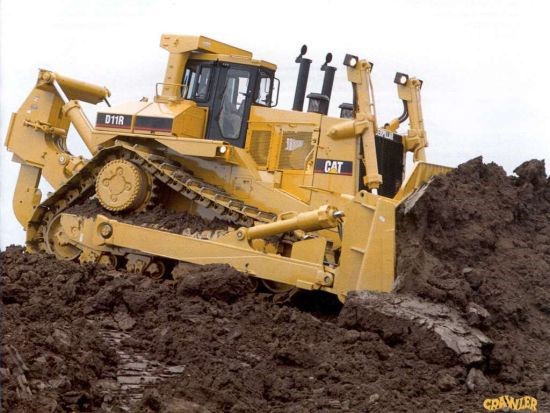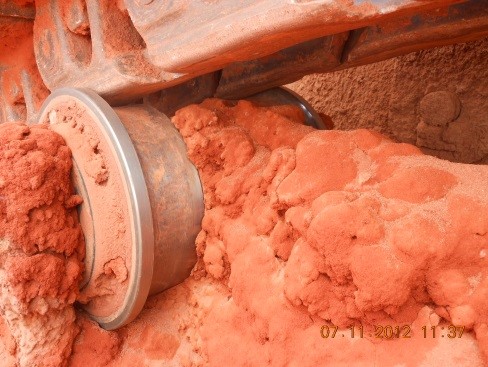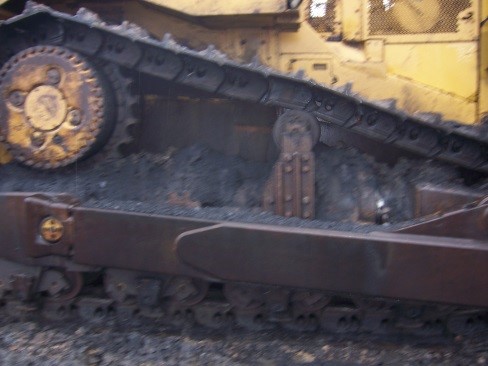When assessing the job site condition, you need to take into consideration, at minimum, Impact, Packing, Abrasion, Moisture, and Chemicals
Impact
The impact of underfoot conditions is determined by machine operating weight (including additional attachments and tools installed on the machine) and machine speed. The impact is best described as the amount of grouser penetration in the ground. The effect of high impact loads can be reduced by decreasing machine speed, using the narrowest shoe possible; increasing the number of grouser bars on the shoe. The increase of impact leads to increased structural problems such as bending, cracking, breaking, chipping, spalling, roll-over, and pin and bushing retention. Generally, wear life of larger machines is less affected by variations in impact than smaller machines.
High — Non-penetrable hard surfaces with constant exposure to 15 cm to 20 cm or higher rocks.
Moderate — Partially penetrable surfaces with constant exposure to smaller bumps.
Low — Completely penetrable surfaces where grouser bar penetrates earth completely and little to no exposure the rocks. There is full shoe support.

Example of High Impact

Example of Low Impact
Packing
Packing is the phenomenon where material in which the machine is operating sticks to the components or between the components.
This can have major impacts on the undercarriage components:
It can prevent parts that typically work together such as bushes and sprockets from engaging with each other in the way in which they were designed to do so. This increases the loading, accelerates the wear of the components and may cause interference problems.
The second major effect is the increased wear on the components where packing has occurred due to the increased abrasive effect of the material on the contact surfaces, such as Track rollers, carrier rollers, link wear surface or sprocket contact surfaces. In some cases, track rollers for example may become jammed resulting in links passing over the roller and creating flat spots. Clay with sand mixed in, will typically create this grinding and polishing effect. Any surfaces subjected to these conditions will often appear polished.
There are many different materials that can create these conditions and moisture added to this increases the stickiness and compact ability.

Example of High Packing

Example of Medium Packing
Abrasion and Moisture
The amount of moisture plays a big role in defining abrasiveness. For example, dry, pure quartz sand may be only 1/10 as abrasive as saturated wet, pure quartz sand slurry and only half as abrasive as it is in a damp condition. This is because moisture affects the rate that particles are carried to and stuck to the metal surface being worn. Some abrasive combinations tend to attack the bushing, others the grousers and still others the links and rollers. These differences are difficult to quantify except by actual experience.
Usually, the link is the best component to use for comparing overall relative abrasive effects because it is least subjected to other variables at the same time. The link is commonly used as the base component when comparing wear lives of different components in different abrasive conditions.
High — Saturated wet soils containing a majority of hard, angular or sharp sand particles.
Moderate — Slightly or intermittently damp soils containing a low proportion of hard, angular or sharp particles.
Low — Dry soils or rock containing a very low proportion of hard, angular sharp sand or rock chip particles.
Chemicals
The effects of moisture as contributing to abrasiveness and packing have been explained.
Moisture or water in itself can corrode steel resulting in the loss of wear material.
Moderate amounts of moisture increase the corrosive effects of many other chemicals and compounds; both those found in nature and man made, such as sulphur, salt and fertilizers.
Water in liberal amounts has the beneficial effect of washing abrasive particles away, softening many packing materials to ease their extrusion and finally, diluting some chemical corrosion agents to lessen their effect.
Corrosive chemicals found in nature plus man-made compounds may have the effect of either eating away at wear material or increase the rate of certain types of cracks. Ironically, most hardened steels are more susceptible to corrosion cracking than softer, unhardened steels. Highly acidic and saline soils can contribute to these effects. Organic chemicals such as petroleum can attch rubber load rings and toric rings in rollers and or idlers causing them to swell and then fail.
Temperature
The effect of hotter temperatures will possibly increase the rate of chemical reactions. Extreme temperatures like the heat found in slag removal at steel mills can damage seals and soften hardened steels found in undercarriage parts reducing their strength and wear resistance.
The effect of colder temperatures for example below freezing point will change the packing effects mentioned earlier. Very low temperatures like -40 Celsius will increase steel brittleness, loss of rubber seal resilience and may affect lubricants.
